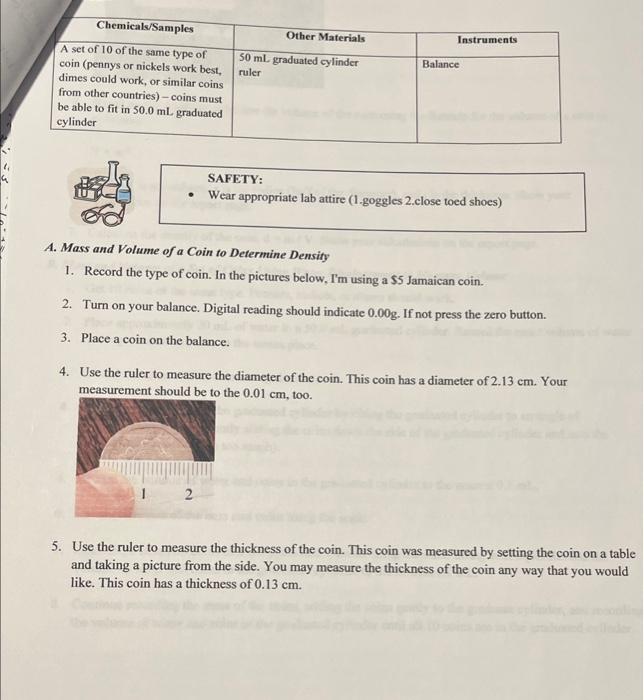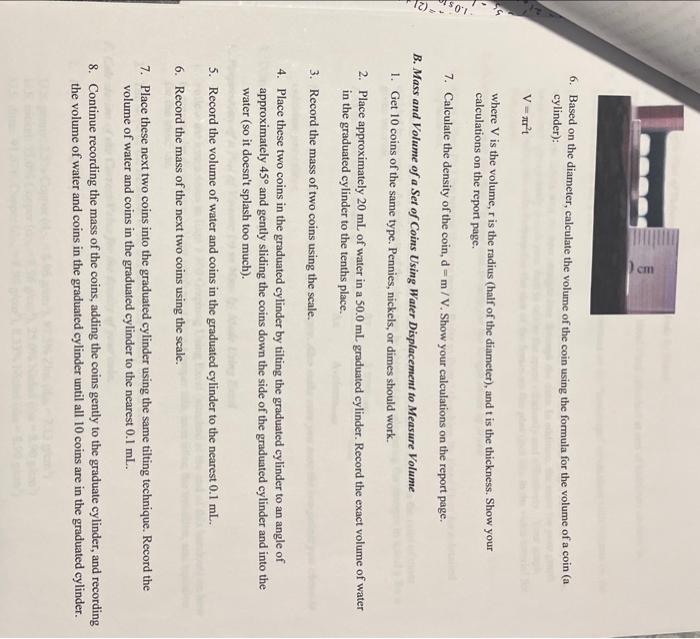1. A metal cylinder has a mass of 37.81g. The cylinder has a diameter of 1.22cm and a thickness of 3.48cm. What is the density of the metal cylinder? Please show your work for full eredit. Vcyliede=r2tr=radius=diameter/2t=thicknessd=m/V A. Mass and Volume of a Coin to Determine Density 1. Record the type of coin. In the pictures below, I'm using a $5 Jamaican coin. 2. Turn on your balance. Digital reading should indicate 0.00g. If not press the zero button. 3. Place a coin on the balance. 4. Use the ruler to measure the diameter of the coin. This coin has a diameter of 2.13cm. Your measurement should be to the 0.01cm, too. 5. Use the ruler to measure the thickness of the coin. This coin was measured by setting the coin on a table and taking a picture from the side. You may measure the thickness of the coin any way that you would like. This coin has a thickness of 0.13cm. 6. Based on the diameter, calculate the volume of the coin using the formula for the volume of a coin (a cylinder): V=r2t where V is the volume, r is the radius (half of the diameter), and t is the thickness. Show your calculations on the report page. 7. Calculate the density of the coin, d=m/V. Show your calculations on the report page. B. Mass and Volume of a Ser of Coins Using Water Displacement to Measure Volume 1. Get 10 coins of the same type. Pennies, nickels, or dimes should work. 2. Place approximately 20mL of water in a 50.0mL graduated cylinder. Record the exact volume of water in the graduated cylinder to the tenths place. 3. Record the mass of two coins using the scale. 4. Place these two coins in the graduated cylinder by tilting the graduated cylinder to an angle of approximately 45 and gently sliding the coins down the side of the graduated cylinder and into the water (so it doesn't splash too much). 5. Record the volume of water and coins in the graduated cylinder to the nearest 0.1mL. 6. Record the mass of the next two coins using the scale. 7. Place these next two coins into the graduated cylinder using the same tilting technique. Record the volume of water and coins in the graduated cylinder to the nearest 0.1mL. 8. Continue recording the mass of the coins, adding the coins gently to the graduate cylinder, and recording the volume of water and coins in the graduated cylinder until all 10 coins are in the graduated cylinder









